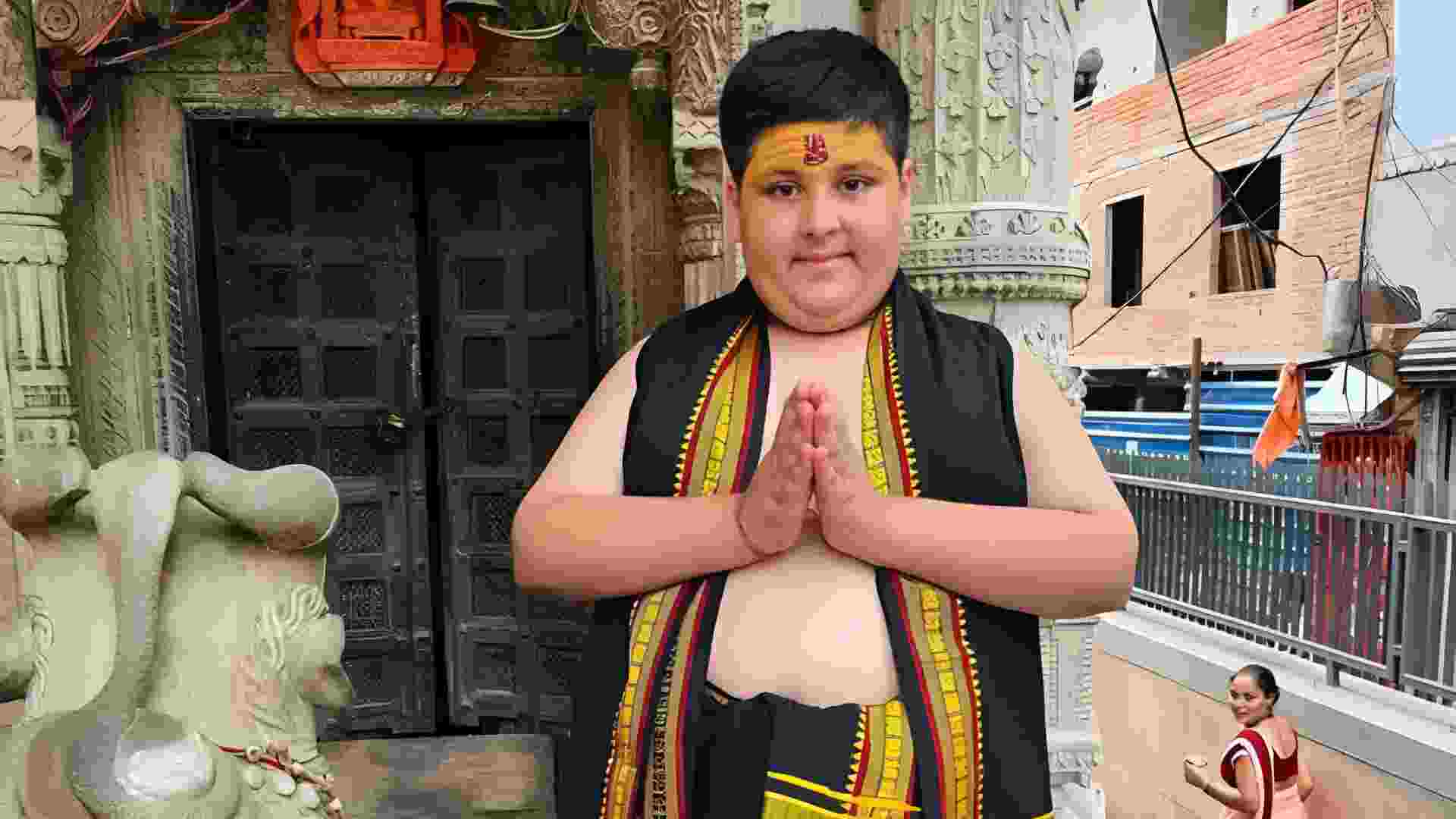
In the previous piece in this series, this author had promised to examine the narrative presented by Indic voices in relation to the indigenous identity of Bharat and its fundamental unity as the basis of its statehood, and contrast it with the treatment of such voices by the colonisers as well as the colonialised native elite. One such Indic voice, whose scholarly works mandate reading by everyone who is interested in Indian history is the legendary historian Radhakumud Mookerji.
Among his works, The Fundamental Unity of India, which was published in 1914, is a compelling read and serves as a stellar precursor to his other works such as Nationalism in Hindu Culture, Local Government in Ancient India, and The Hindu Civilization, among others. The cover page of the book makes it a point to unabashedly, and perhaps in a matter-of-fact manner, inform its readers that its contents are based on “Hindu Sources”. The introduction to the book was written by James Ramsay MacDonald, one of the founders of the left-of-centre Labour Party in Britain, who went on to become the Prime Minister of the United Kingdom for a significant period of time.
In his five-page introduction to The Fundamental Unity of India, MacDonald evocatively captured the prevalent mood of derision among his compatriots towards the idea of India as a single nation. In fact, he observed that the common notion among the English Governors from “Ceylon to Afghanistan”, that India was “a mere collection of separate peoples, traditions, and tongues existing side by side with no sense of nationhood in common”, was the product of “a superficial view of India”. On the contrary, according to him, India’s history clearly pointed to the “evolution of a civilization”.
He concluded that those who read Mookerji’s book were likely to open their eyes to the alternative viewpoint, the indigenous viewpoint,that the average Hindu, her traditions and her religion regarded India not merely as a single political unit regardless of who ruled it, but also as the “goddess mother” of her spiritual culture. MacDonald located Mookerji’s efforts to understand Indian history through indigenous sources within the larger canvas of India’s awakening to a new sense of independence and self-respect. This (re)awakening, he believed, was a pre-condition for India to contribute her share to the culture of the world.
How is MacDonald’s introduction to Mookerji’s book significant or relevant to the discussion at hand whose leitmotif is decoloniality? Does it assume relevance because of the colour of MacDonald’s skin, or because he was an Englishman or because he became the Prime Minister of the UK? None of these facts are relevant. But what is certainly relevant is that in his own way, without using the term “decoloniality” or its framework as it is understood now, MacDonald was essentially recognising Mookerji’s work as part of a growing Indian decolonialising (and not just decolonising) movement to reclaim its right to self-definition, as well as underscoring the reclamation’s indispensability in order for India to occupy its rightful place in the new global order.
Second, his views show that just as there were colonialised native elites who shared the coloniser’s condescending view of Indian history, there were many in the English society who acknowledged that Indians had the right to present their historysans the colonial tropes and stereotypes. Simply put, sometimes a native may weaponise his or her identity to undermine indigenous epistemology and way of life, while the non-native may be much more open-minded to the validity and legitimacy of the native’s worldview.The present-day discourse surrounding Indian history only proves this point better with each passing day.
Third, it is ironic given the sight that meets the eye today in India that despite being a politician of Centre-Left persuasion, MacDonald did not find it either jarring or communal that Mookerji was drawing from “Hindu Sources” to make a case for the fundamental unity of India in order to justify its quest for independent statehood. To MacDonald, it seemed like the natural historical reservoir to draw from, to rediscover the identity of Bharat. Assuming that the Left-Right binary in India is a colonial legacy, given the connotations and perceptions of the Left and the Right in India today, one wonders if MacDonald’s present-day ideological fellow travellers in India would be as open as he wasto Bharat’s history being traced to “Hindu Sources”. Or would their views echo those of the English Governors to whom MacDonald was referring?
Coming back to MacDonald’s observation that it would be superficial to reduce Bharat to a motley collection of separate peopleswith no sense of nationhood in common, it takes us to the central question sought to be addressed by Mookerji in his book–What unifies the people of Bharat despite its overt diversity? Drawing from Hindu philosophical thought, Mookerjiwas of the view that just as the spirit needed a body to express itself, a material physical canvas, namely land, was necessary for a people to express and identify themselves with, either as a nation or a civilisation. According to him, once that self-expression reached a degree of individuality which distinguished it from others, it demanded independent preservation as an identifiable cultural unit. This, he believed, underscored the existence of cultural unity among the people living within that geography.
Mookerji argued that while “Indian Nationalism” acquired more visibility under the British Rule and perhaps owing to the need to throw off the colonial yoke, its origins and existence were much older than the advent of the British in India. He contended that Bharat’s view of itself was that it was a cultural unit which had a federation of sub-identities that preserved their individuality and equally contributed to the evolution of a central or common culture. In other words, there was an underlying and fundamental cultural unity in all the diversity. To support this contention, Mookerji relied on the Vedas and Puranas as historical documents to trace the evolution of a common shared geography in the consciousness of the people of Bharat, and their treatment of the geography as well as its constituents asobjects of veneration and pilgrimage.
In fact, according to Mookerji, the institution of pilgrimage not only sanctified the parts, but also mandated reverence of the whole. For instance, worship of the seven rivers, the seven mountains, the seven cities, the four abodes of pilgrimage, the four mathas established by Adi Shankaracharya and the like effectively created and strengthened the idea of Bharat as a sacred geography. As a consequence, the people of the land were not merely encouraged but also enjoined to see themselves as citizens of a living civilisation whose territorial metes and bounds were deeply embedded in popular memory through prayers and rituals. The network of shrines spread across the length and breadth of the land naturally triggered a movement of people so that their allegiance to vibrant regional identities did not submerge or prevail over the civilisational identity.
Critically, while the above served as positive proof of an identified landmass being associated with an identified culture, the negative proof, according to Mookerji, lay in the fact that all these objects of veneration were located within the same geography and not in some far-off distant land. In other words, the foci and loci of religious and cultural identities, both lay within the same sacred geography, which was proof of civilisational oneness.In the next piece, this author will continue to discuss this idea of civilisational oneness of Bharat with reference to Mookerji’s works and those of other Indic voices.
(J. Sai Deepak is a practising Advocate before the Supreme Court of India and the High Court of Delhi)














